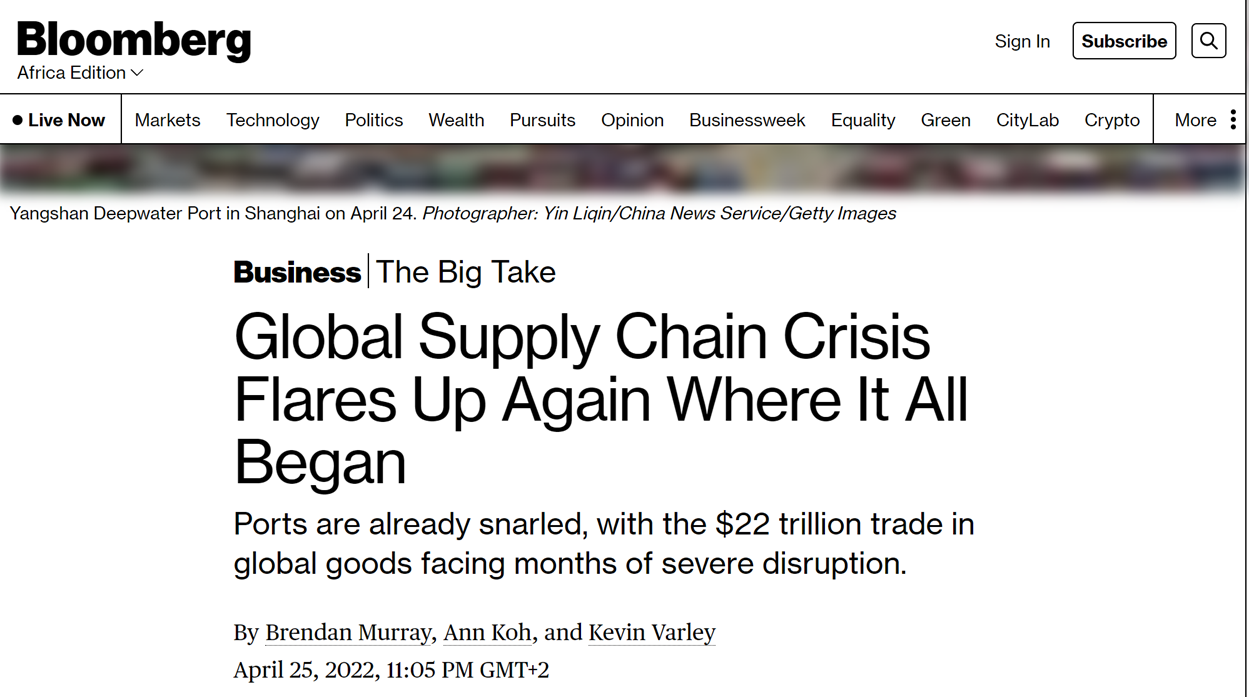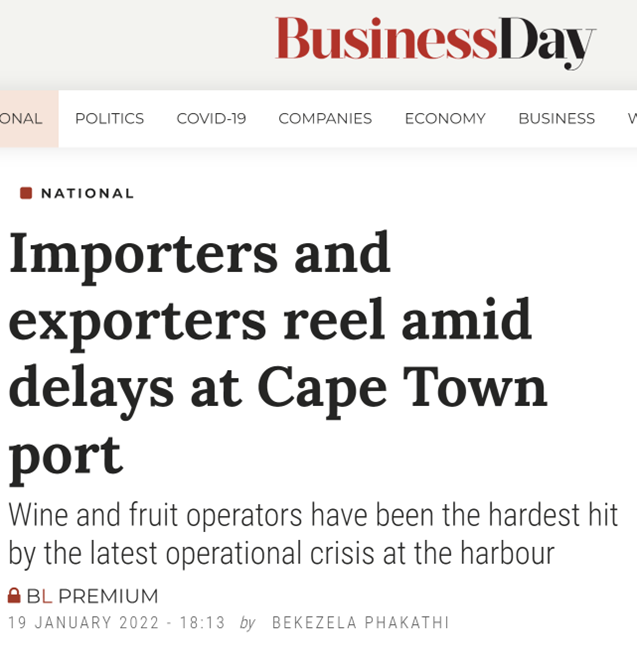Dude where's my cargo?
Estimated reading time: 4 min
A hypothetical supply chain risk scenario unfolding in real-life
Short summary translation of the above newspaper article that appeared in the Rapport newspaper on 12 June 2022:
A transport broker contracted a reputable transport company and made available cargo to be transported with the very reasonable expectation that said cargo (maize meal) would be carried from Point A (Meyerton SA) to Point B (DRC) by the appointed transporter.
Why was this a reasonable expectation? - The transporter
- was a reputable and reliable company,
- specialised in cross-border cargo,
- had good references from a range of clients,
- had done this type of trip before,
- appeared to had a reliable fleet, and
- the necessary minimum payments were made.
However, according to the newspaper article, the client in the DRC informed him after some time that some scheduled deliveries never took place, despite payment and import clearances. Due to delays caused by border clearances and Covid19-related supply chain delays, the time required to do a one-way transport increased from an average of 14 days to 45 days. This made it difficult to gauge progress. Despite querying the progress often, the transport broker was assured all is under control and in accordance with the schedule. For this reason, the problem was not picked up much earlier.
It is only after a phone call was received from a (probably) irate client in the DRC, that the transport broker's lingering suspicions got the better of him and he realised something major was amiss. He then jumped in his car, drove to the transporter’s premises, and much to his shock and horror discovered rows of semi-covered pallets of maize meal exposed to the elements: sun, wind, rain, and insects.
This matter is now before the court.
This situation was preventable
We are using this real-world example, not in order to finger-point any type of transport service provider or attempt to allocate blame, as that is the matter before the court. For this reason, we also removed the names of the parties involved as it is not particularly relevant to the point being illustrated.
This case, however, is a real case study where a number of parties to a cargo shipment that has to be transported from A to B have to rely on each of the other role players to do the right thing at the right time and thereby prevent any potential transport risk from materialising.
The client (and their broker):
- Had to rely on the verbal confirmation of the service provider/transporter without any 3rd party or IT system confirmation of facts,
- Did not have reliable means of communication with drivers,
- Did not have agents at way-points to confirm status,
- Did not have any access to real-time reporting on the location of the cargo, and was, therefore, unable to track actual trip progress made,
- Did not have any real-time information on the condition of the cargo, and was, therefore, unaware that the cargo was left standing in the sun, wind and rain for an extended period of time.
Supply Chain Visibility
With the help of modern technology, some of these risks can be detected, monitored, managed and in some cases even prevented:
- Cargo items being exposed to elements (sun, wind, rain) or experiencing fluctuations in temperature leading to damages, losses, insurance, and legal claims,
- Transport and Border Delays,
- Late deliveries,
- Unnecessary detours,
If your company or somebody you
know had a similar horror story, there are now Internet-of-Things (IOT) solutions that can
assist you to monitor your fleet from the relative comfort of wherever you have
internet access: a Fleet Visibility Platform offers you the following
advantages
- Transparency
- having real-time end-to-end IOT visibility into where your operational
assets/inventory/shipments are, with hyper-accurate location data, despite
using different 3rd party logistics providers or channels, such as
warehouses, handlers, or distributors in multiple locations.
Attribution: vecteezy.com/members/illustration4stock224427
- Keeping
track of critical performance data - Key indications such as transit time,
stops and halt periods, loading times, and whether or not unauthorised
pauses or unexpected delays happened are all available on the fly. This
gives you information, allowing you to predict whether your operational
assets, inventory, or freight will arrive on time, ahead of schedule, or
late. It also allows you to keep track of the performance of your
suppliers.
- Auditability
- Having an audit trail to demonstrate the real-time condition of fragile
or high-value inventory / perishable shipments. Knowing whether the goods
were handled in accordance with the SLA and/or regulatory compliance
standards throughout the route.
- Real-time
condition reporting – Knowing the status of your perishable/fragile
shipments in real-time, as well as being able to pinpoint and apportion
blame for damage as it occurs.
5. Actionable insights in real-time to:
- Protect your business operations against both known risks and unforeseen events and disruptions.
- Respond to and manage exceptions by making fact-based decisions.
- Lower expenses and minimise damage to perishable and fragile goods, as well as shrinkage and/or losses of high-value items.
- Improve the quality of forecasting and inventory management,
- Maximize operational efficiency,
- Increase customer satisfaction,
- Improve profitability,
For more information please visit: Cogniplex Visibility Solutions
Need more information? Want to start a pilot project? Please contact us
























